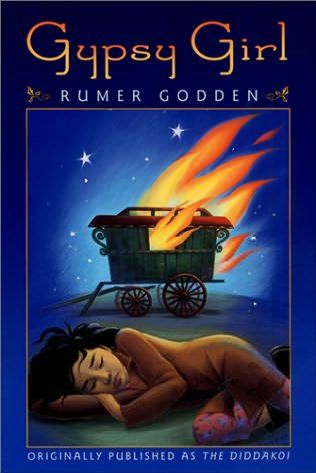Books help children grow. They can be the quiet place in a storm; an introduction to a friend who feels the same way they do; a blueprint for how to deal with problems they feel no one else in the world can possibly understand. The books of Rumer Godden are why I became a children’s book writer: they taught me an understanding of the power and comfort of books that became part of my nature.
I thought I’d read all of Godden’s books, so I’m not sure how I missed the two here. I would have adored THE STORY OF HOLLY & IVY (Puffin 2010) as a child. In this newest edition illustrated by Barbara Cooney, it carries the kind of classic emotional power of all of Godden’s books.
“This is a story about wishing. It is also about a doll and a little girl. It begins with the doll.”
It’s about a doll who is left alone in a toy shop window on Christmas Eve “dressed for Christmas in a red dress, and red shoes, though her petticoat and socks were green,” and who longs to be held by a child’s hands. It’s about a little girl of six, who lives in an orphanage and longs, so much, to find a home for Christmas that she runs away to find a grandmother who doesn’t exist. It’s about a lonely young policeman’s wife who has no children, but who sees a doll in the window of a store and feels stirrings of a feeling she has not had for a long time, “a feeling of Christmas.”
How these three find one another on a snowy Christmas Eve is a read-aloud story children will remember all their lives. Reminiscent of The Little Match Girl for its pathos and understanding of the sometimes perilous lives children lead, this story ends happily because the doll, and the little girl, and the young wife all understand the power of wishing.
“If I had not wished,” says Holly at the end.
Young readers will be glad she did.
* * * * *
I suspect I overlooked THE GYPSY GIRL because it was originally published with the  title DIDDAKOI. That would have meant nothing to me and, as I well know now, children will over-look a book for any tiny reason. But I would have loved this book, too.
title DIDDAKOI. That would have meant nothing to me and, as I well know now, children will over-look a book for any tiny reason. But I would have loved this book, too.
“I know a bit about being homeless,” one of the adult characters in it says. That’s what eight-year-old Kizzy Lovell is dealing with. She’s a gypsy, as she would proudly call herself; or a “Diddakoi” as the cruel children at the English village school she’s forced to attend, taunt her. Or a “traveler” as the understanding woman who takes Kizzy in, rightly says.
When we first meet Kizzy, she has never gone to school. Never had toys. Wears gold rings in her ears and fury in her dark eyes. All she has is herself and her fierce independence after her Gran’s wagon burns and Kizzy is left without a home. All she has is Joe, her beloved horse. And then Joe dies, too, but Kizzy’s not about to give up. And she will never conform. Small wonder, the girls in school gang up on her.
It’s the way in which Kizzy stands up to them, all twelve of the horrid things, cruel in the way that nice girls can become when they’re in a gang, that make this book so full of emotion. In this day and age, when so many children find themselves living in difficult situations, and more than thirty years after it was first published, this classic story of one girl’s courage to stay true to herself will resonate with young readers.
Oh, and grown-ups will love it, too. I promise. (Ages 8 and up)










